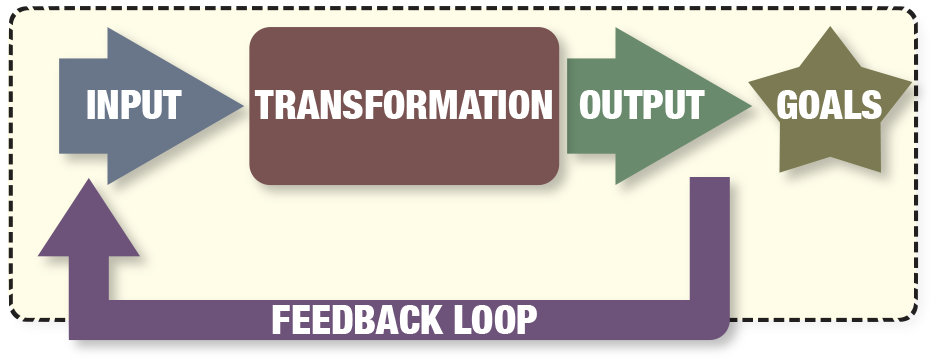I don’t know about you, but I get excited every time I read the phrases “vicious cycle,” “feedback loop,” and “housing bubble” in the New York Times, Wall Street Journal, or other mainstream news sources. Have you heard of Systems Thinking?
With the emergence of two critical global crises–the economic meltdown and climate change–wise observers have begun to use the language of loops and links to get at the root of the behaviors we’re now experiencing in a big and painful way.
The “as a whole” picture
For those who have been working in the trenches to convince organizations and governmental bodies to adopt a systemic perspective, it would be tempting to kick back and think the work is done. I mean, if an award-winning journalist such as Tom Friedman and Nobel laureate like economist Paul Krugman can look at the world through this lens, then what more can we add?
Implementing the Systems Thinking

But as anyone who has applied systems thinking tools to problems within their organization, community, or even family knows, the real challenge is in the implementation. It’s all well and good to recognize the feedback loops that prevent a business unit from performing up to potential; it’s another thing, though, to then set about using that knowledge to improve the current situation and avoid such quagmires in the future.
What is Systems Thinking?
Many of us are just interested in changing just ”one small thing“. Systems thinking is the process of understanding how things influence one another within a whole.
The Holistic approach
Systems thinking has been defined as an approach to problem-solving, by viewing “problems” as parts of an overall system. The component parts of a system can best be understood in the context of relationships with each other and with other systems, rather than in isolation.
I often remind them that the various part of our lives are intricately interconnected and part of a larger whole…bringing things into an entirely new light. Everything is connected, and if we simply try to “silo” one area and single it out for change, chances are that you will end up feeling a bit stuck.
This can also be a bit overwhelming! If everything is indeed connected, then that opens up a lot of other options. Think of a house with many front doors. If the front door is locked, there are many other options for entering the house. The more you embrace just how much everything in your life is related to everything else in your life, the more ways there are of getting in.
Here is an example:

A woman is trying to lose weight. Try as she might, she can’t seem to stick to a diet. My advice? Take a look at what’s going on around the issue of diet. What emotional issues related to food (or not related to food) are going on in her life (mood, frustration)? How’s her social life? What’s she doing for fun? How does she feel about her job?
Do you see how not all of the questions relate directly to food? What’s prioritized here is helping this client make lots of changes in her life, not just with eating.
If we’re stuck in trying to make changes with food, we have to look for other things to work on, and that doesn’t mean we’re ignoring the issue of food. What we’re doing is saying, “Hey, everything’s related to food (and everything else).” We’re finding another way in.
Using the Cognitive therapy
Cognitive therapy techniques are simple to understand and help develop a powerful “resistance muscle” that can be flexed whenever they want to stand strong and stick to their program.
As an example, every single time you decide against eating something unhealthy, your resistance muscle gets stronger, making it a bit easier to resist the next time around. Here are some examples:
1. You are offered a big slice of birthday cake at the office. You spontaneously say “No thank you” because you are thinking “I would rather continue to be as healthy as I can today.”
2. You are tempted to take a second large slice of bread from the restaurant breadbasket. You automatically reject the idea, because you are thinking “No, I didn’t plan to have this.”
Many people believe that they simply can’t develop a strong resistance muscle because they think of eating as an “automatic” process. Although eating may indeed seem automatic, it’s really not! A client recently told me that he was not sure how to finish an entire extra-large bag of trail mix. He felt it was automatic. I reminded him that digestion is automatic, as is the beating of his heart…but eating is not!
Recognizing thoughts is an important part of evaluating one’s relationship with food. Before you eat, you always have some sort of thought, even if you are not fully aware of it. Recognize these thoughts, especially those which can be sabotaging, and encourage them to eat food that may not be good for them. These thoughts often begin along these lines:
1. It’s okay to eat this (cupcake) because…
2. It won’t matter if I eat this (cupcake) because…
It’s important to “answer back” to these thoughts, so they don’t lead you away from your path.
Change your thinking, and you can change your behavior. Change your behavior, and a healthier relationship with food will follow!










